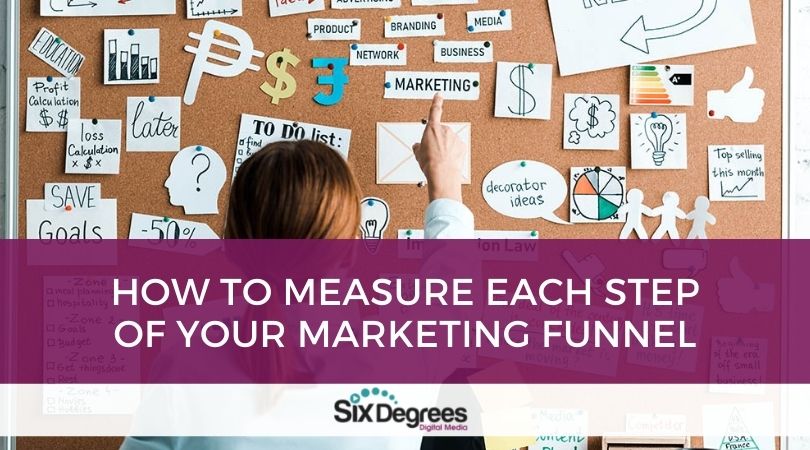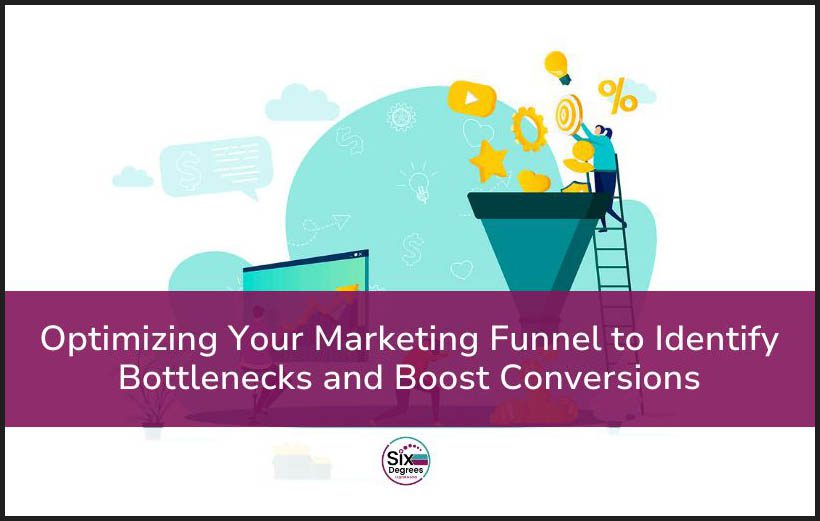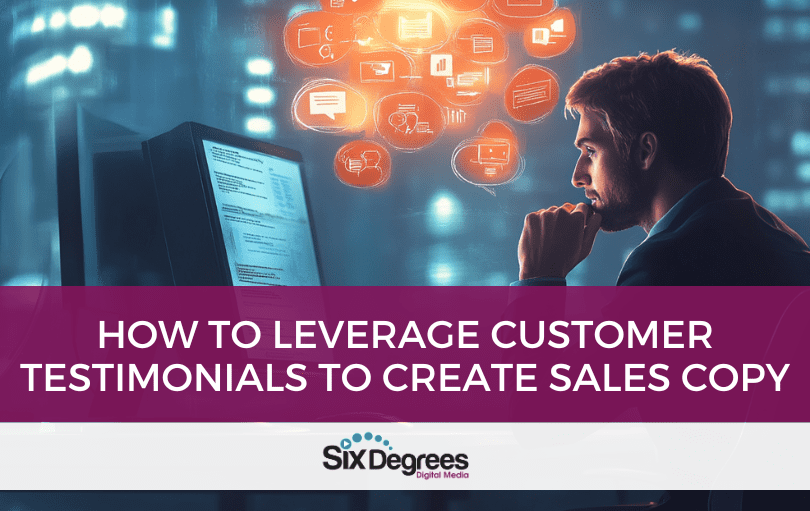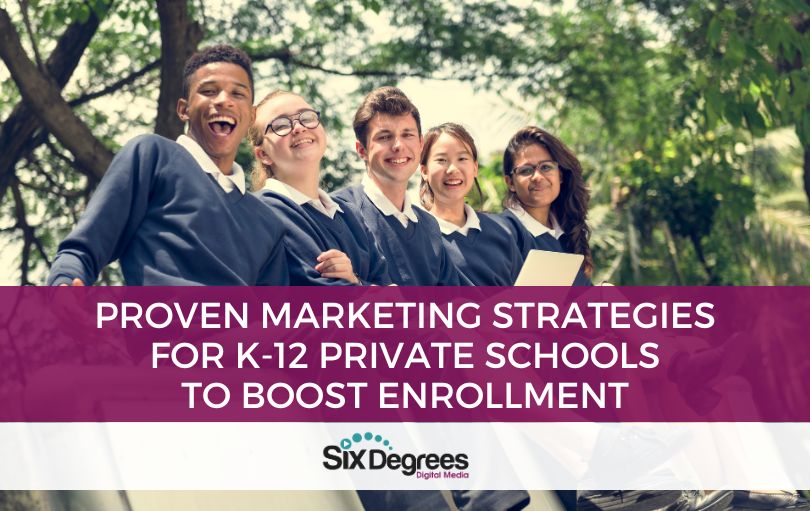
Whether your primary goal is to grow traffic, boost conversion, or both, a marketing funnel is all but necessary when constructing your overall marketing strategy.
If you’re having trouble with the success of your marketing funnel, it’s imperative to search for the bottleneck(s) causing the problem. Be prepared, however, that there may be more than one bottleneck that needs to be addressed.
That said, what follows will be a discussion of what a marketing funnel is and what it’s comprised of, how to execute each step, and what to measure throughout the funnel’s lifecycle in order to ensure success and avoid mishaps.
While a marketing funnel may seem quite logical in its explanation, its execution is one of complexity that requires tedious analyzation skills and a willingness to adapt based on your findings. This article aims at assisting you with this process.
So, without wasting any more time, let’s jump into it!
What is a Marketing Funnel?
A marketing funnel is a tiered roadmap that is built to guide potential buyers along their buying journey from start to finish. Its intention differs depending on the stage at which the potential buyer is, however, the ultimate goal remains the same, conversion.
While there are several ways to view and create a marketing funnel, the general concept tends to be universal, offering those who don’t understand it an easy explanation. Although marketing funnels are easy to explain, however, execution isn’t so simple.
In totality, a marketing funnel tends to be comprised of three stages (or four depending on which model you subscribe to), each stage is comprised of several sub-steps that include but certainly aren’t limited to paid advertising, landing page construction, email marketing, content strategy, SEO, and more.
The Stages & Steps of a Marketing Funnel
While marketing funnels are often overcomplicated, there are really only three stages to note. Those stages are as follows:
- Top of the Funnel: Awareness
- Middle of the Funnel: Consideration (i.e. Interest and Desire)
- Bottom of the Funnel: Conversion (i.e. Action)
It’s important to understand, however, that while a marketing funnel is logically created, its real-world application isn’t always as fluid. In other words, the buyer’s journey isn’t always consistent, often taking several attempts to capture their attention, and even more attempts and guiding them to the end of the funnel.
This is quite normal and shouldn’t cause discouragement amongst brands and businesses that are behind the funnel. Rather, it’s simply an opportunity to learn about your audience’s buyer behavior and, over time, may present any flaws your funnel might have.
The Awareness Stage
During the awareness stage (the top of the marketing funnel), brands and businesses aim to create content and implement strategies that pave the way for reception and interaction, either now or in the future, with their target audience.
The primary goal of the awareness stage is to do just that; build brand awareness.
This is typically accomplished through landing pages consisting of informative yet captivating content surrounding your brand and its offering. It could also be accomplished through organic social media content as well as digital paid advertising.
The Consideration Stage
During the consideration stage (the middle part of the marketing funnel), brands and businesses seek to engage with potential leads gathered from stage one. This could be from social media followers, email subscribers, webinar signups, or any other sign of interest shown from a potential buyer during the awareness stage.
The primary goal of the consideration stage is to build a trusting relationship with the potential buyer. Now that they’ve shown interest in you, it’s time for you to show interest in them, answering to any needs or desires they’ve presented. It’s also a chance for you to get to know them better through surveys, Q&As, social media engagement, landing page requests, or otherwise.
The Conversion Stage
Now that you’ve made them aware, gotten their attention, and earned their trust, it’s now time to convert. The conversion stage (the final stage of the marketing funnel) is where you provide them with an offer, free but valuable tangibles, upsell them and offer exclusive deals, and eliminate any doubt that you’re the premium choice over your competitors.
The primary goal of the conversion stage is, of course, to convert potential buyers to buyers. This can be accomplished in several ways, however, one example is through targeted email series to those who have reached the checkout, abandoned shopping carts, and/or made a desired action on your website or blog.
Remember that each stage of the marketing funnel differs and no one marketing funnel is the same. Additionally, while the roadmap to conversion is a linear one to convert potential buyers, it doesn’t always work out that way. In other words, some may jump immediately to purchase without the need for the awareness and consideration stages. Others may bounce from stage to stage until they’ve made a final purchasing decision.
With all of that in mind, by measuring the success or lack thereof of your funnel, and by tailoring each stage to your specified target audience, you give your brand/business the greatest chance at success.
Measuring Your Funnel’s Success (or lack thereof)
In order to measure the success of your marketing funnel and identify any potential bottlenecks, you need to measure against both qualitative and quantitative metrics.
In other words, it’s not enough to track statistical data across the board. Instead, tracking both numerical KPIs and qualitative/behavioral data in collaboration with one another will ensure that you don’t miss out on any potential problems.
What’s the difference between qualitative and quantitative data you ask? Great question!
Quantitative data, or numerical data, is a set of metrics that provide information regarding the concrete performance of your funnel. Key metrics include cost per acquisition, lifetime value of a customer, and conversion rates, among others. These analytics can be measured through Facebook Analytics, Google Analytics, and other analytics tools available online.
The problem with quantitative data when not measured in collaboration with qualitative data is that it becomes presumptive; resulting in marketing assumptions that may not be the most accurate.
Quantitative data, then, is a measure of customer satisfaction and behavior; an identification of how their buyer journey is experienced. Quantitative data is measured through surveyed feedback, session recordings, heat maps, A/B testing, and even retention rates.
By understanding that both are required to measure the success of your marketing funnel step-by-step, you understand that the measure of success goes beyond traffic statistics and conversion rates. Once this knowledge has been gained, you can begin to optimize your funnel at all stages of the buyer’s journey, ensuring that no stone is left unturned!
Identifying Bottlenecks & Finding Solutions
Identifying marketing funnel bottlenecks can be a long and tedious process, however, it tends to present itself quite clearly once you’ve noticed an uncalled for drop in sales or a lower conversion rate than usual. When you see these signs, it’s important to do all that you can to identify the bottleneck as timely as possible, for time is most certainly money in these situations.
While the potential reasons behind this are numerous, it’s likely a result of a bottleneck within your funnel.
In order to fix a bottleneck, you must first successfully identify it. As discussed, this is largely accomplished through the measuring of qualitative and quantitative metrics.
Ok great, measure and track metrics, but then what?! Let’s dive deeper into the specifics of common bottlenecks and how to find solutions. What follows will be a discussion of potential bottleneck scenarios throughout the stages of the funnel, why they’re occurring, and what to do to fix them.
Email Series Marketing
Using an email follow-up series is a common and effective strategy during the lifecycle of a marketing funnel. Whether it’s to spread brand awareness, boost consideration, or lead to an offer whether free or paid, emails have proven in time to be an effective strategy.
A common bottleneck, however, is when a large percentage of opt-ins aren’t converting. This begs the question, why’d they sign up and opt-in if they’re not interested in pursuing the offer? In this scenario, the problem is poor CTR’s, open rates, and conversions.
Luckily, the solution is quite an easy one. If you find yourself in this situation, try A/B testing new copy, subject lines, and headlines. The problem could be as simple as ineffective copy that isn’t engaging or captivating enough to elicit any meaningful action.
Landing Pages
The primary goal of a landing page is to increase targeted traffic. The most common problem that many marketers run into, however, is poor conversion. Similar to email series marketing, consider A/B testing different landing page content.
Consider tweaking the call-to-action, changing the heading, recreating the copy, and/or redesigning the overall design of the landing page itself. While it may seem trivial, these factors could be the difference-maker of poor conversion rates and satisfactory conversion rates.
Paid Advertising
Paid advertising is all but necessary when it comes to marketing strategies and buyer funnels. As a great Segway, paid ads go hand-in-hand with your funnel’s landing pages. If they’re not congruent with one another, confusion may be the result, thus lowering click-through rates and conversions on your ads.
In order to ensure that this doesn’t happen, be sure to A/B test your ads, whether that be the call-to-action, the ad types, or the copy/headlines themselves.
The Offer
What the marketing funnel truly comes down to is the offer; what the potential buyer is ultimately encouraged to take action on. If the offer is weak, the entirety of the funnel is likely a waste of time and money; If it doesn’t align directly with your target audience’s interests and needs, it’s likely a waste of time and money; and if it’s a non-competitive offer that doesn’t at least match industry offers, it’s likely a waste of time and money.
The primary performance indicator here is conversions and opt-ins. If neither are showing any promise, one of two things could be the cause…
First, you’re not gaining enough traffic to the offer in order to see any meaningful movement in the data. Second, the offer isn’t good enough. If that’s the case, you may need to consider changing the offer completely.
The Keys to a Marketing Funnel’s Success
While bottlenecks aren’t an uncommon occurrence when it comes to marketing funnels, that isn’t an excuse for it to happen to you. That said, there are preventative measures and proactive steps you can take to ensure that the success of your marketing funnel is viable.
First, it’s important to take the time during the initial buildout of the funnel to really hone in on your strategy and streamline the process as best you can.
Second, do your market research prior to launching any level of a marketing campaign, whether a funnel or otherwise. This means identifying your target market, understanding their buyer persona, and ensuring that the correct audience is being targeted through paid ads.
Third, do your due diligence when it comes to the use of technology before deciding in any capacity to create a marketing funnel. Too often, brands and business owners embark on the creation of a funnel because they know it’s the right thing to do. Unfortunately, they fail to consider the technological know-how needed for such an endeavor. As you can imagine, this inevitably leads to problems and incurred bottlenecks.
lastly, and most importantly, if a problem or bottleneck does happen to arise, take immediate action towards resolution. Don’t play the blame game, to assume or summarize, simply act to fix the problem.
In short, marketing funnels are an extremely effective tactic not only for attracting relevant leads but for converting them into lifetime customers in an efficient and streamlined fashion. While there are certainly cons to its curation and management, the advantages far outweigh them.
If you need assistance with your marketing funnel, schedule a strategy session with us today.





